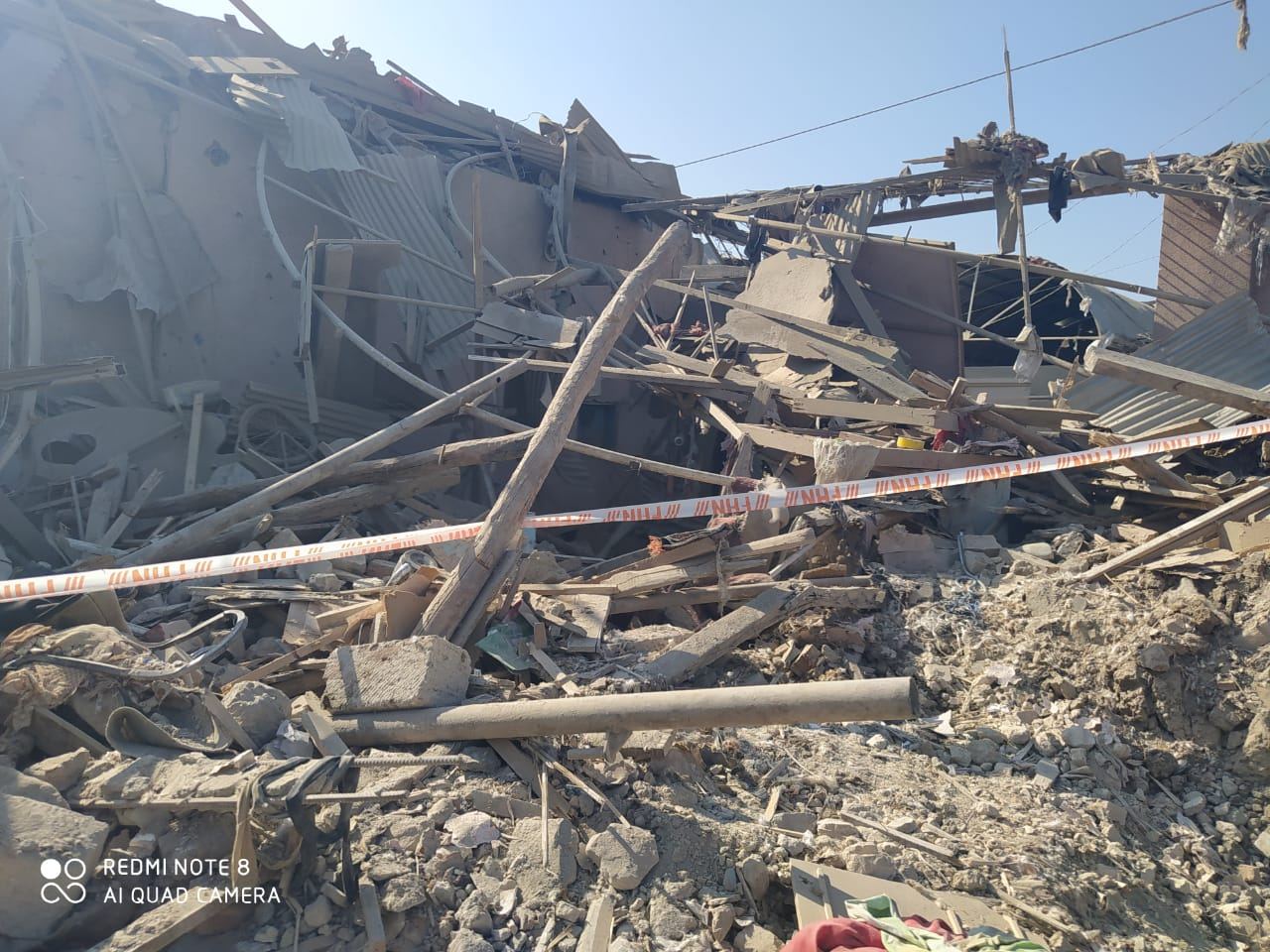BAKU, Azerbaijan, Oct. 17
Trend:
An article covering the Armenian missile attack on Ganja the night of Oct.17, 2020 has been published by The Guardian news agency, Trend reports.
In an article named “Nagorno-Karabakh: Azerbaijan says 12 civilians killed by shelling in Ganja” the author writes that reporters in Ganja saw rows of houses turned to rubble by the shelling, and a rescue team removes black bags containing body parts from the scene.
“The strike shattered the walls and ripped the roofs off buildings in the surrounding streets. People ran outside in shock and tears, stumbling through muddy alleys in their slippers, some wearing bathroom robes, and pajamas. One witness said he saw rescuers pull a small child, two women and four men from the debris in the minutes immediately after the strike,” the report said.
The article also emphasized that the attack came only six days after a missile struck another residential part of the city of more than 300,000 people, killing 10 civilians.
“At around the same time in the city of Mingecevir, an hour’s drive north of Ganja, reporters heard the impact of a huge blast that shook buildings. Mingecevir is protected by a missile defense system because it is home to a strategic dam, and it was not immediately clear if the missile was destroyed in the air or had made an impact,” the report said.
As a result of rocket fire on civilians in the central part of Ganja on October 17, 13 people died, over 50 people were injured, and numerous civilian infrastructure and vehicles were seriously damaged.
The Armenian Armed Forces, flagrantly violating norms and principles of international law, the Geneva Conventions of 1949 and Additional Protocols to it, as well as the requirements of the humanitarian ceasefire declared on October 10th, continue to deliberately target the civilian population of Azerbaijan, and intensively bombard densely populated settlements.
Armenian Armed Forces launched a large-scale military attack on positions of the Azerbaijani army on the front line, using large-caliber weapons, mortars, and artillery on Sept. 27.
Azerbaijan responded with a counter-offensive along the entire front. As a result of retaliation, Azerbaijani troops liberated a number of territories previously occupied by Armenia, as well as take important, strategic heights under control.
The conflict between the two South Caucasus countries began in 1988 when Armenia made territorial claims against Azerbaijan. As a result of the ensuing war, Armenian armed forces occupied 20 percent of Azerbaijan, including the Nagorno-Karabakh region and seven surrounding districts.
The 1994 ceasefire agreement was followed by peace negotiations. Armenia has not yet implemented four UN Security Council resolutions on the withdrawal of its armed forces from Nagorno Karabakh and the surrounding districts.






